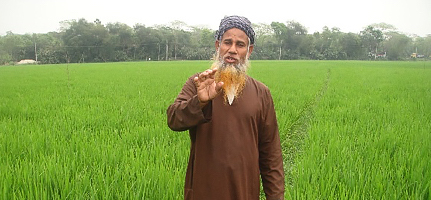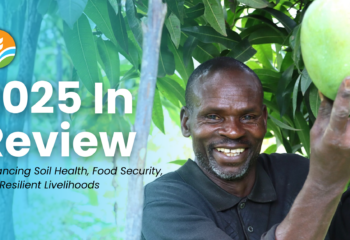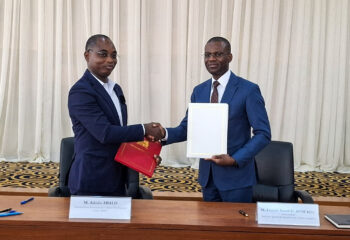
Ever since he was a boy helping his father farm the fields, Md. Abdus Salam Matbor has been growing crops. He continued to assist his father in the fields until 2006 when his father died. One year later, Matbor began his life as an independent farmer, following the legacy his father gave him to feed his own growing family of five. Like his father before him, he planted local varieties of seed and fertilized his fields by broadcasting urea on his rice crop.
In 2009, he began working with an IFDC field officer and a government extension agent, from whom he learned about the USAID-funded Improved Livelihood for Sidr-Affected Rice Farmers (ILSAFARM) and urea deep placement (UDP) technology. Having not seen the positive results of the fertilizer technology, he continued using broadcast urea, which had proven itself moderately reliable in the past.
His reservations finally caved one year later to the overwhelming success of UDP application, and he decided to put it to the test himself. He received training and applied the briquettes to a small portion of his rice crop (0.09 hectares). His own test met with success – the rice in that plot yielded more grain from 50 percent less urea than his previous fertilization method.
Two years later, Salam was 55-years-old and well-established among the villagers as a regular UDP user, regularly harvesting 30 percent more rice production thanks to the technology and training he received. From his high standing in the community and among other beneficiaries of IFDC’s AAPI project, he motivated 10 other farmers to use UDP, all of whom have adopted it for their crops.
To increase his farm efficiency, he bought a double row UDP applicator and uses it in all of his rice fields. In addition, he regularly lends the machine to his neighbors. He has reduced the cultivation cost by using 50 percent less fertilizer in addition to lowering his labor cost, since UDP lessens the amount of weeds – and the labor cost associated with removing them from the field.
His fields have received an upgrade as well, since he switched from a local variety of rice and now grows an improved variety that yields more grain. He even uses UDP on his diverse upland crops: okra, eggplant, bananas, and papayas.
With his increased earnings, Matbor has now constructed three semi-permanent houses with modern latrine facilities and dug two new tube wells for his family’s drinking water. One house is his own, while the other two are rental homes for people in his community. His income now averages about U.S. $254 per month.
The AAPI project (2010-2016), funded by the U.S. Agency for International Development (USAID), is improving food security and incomes in rural areas of Bangladesh.




